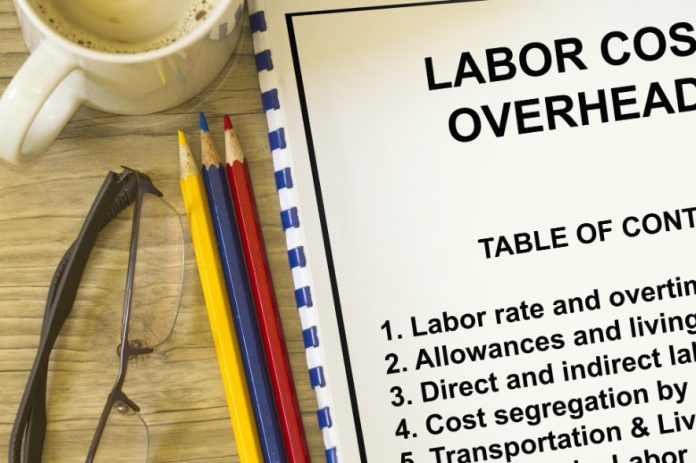Are your labor costs spiraling out of control?
The average business spends 25-30 percent of its gross sales on paying salaries and other related expenses. In fact, labor is often the largest expense in most established businesses.
To stay in business, you have to control your labor cost. Doing so, however, is easier said than done. Hire too few workers and the operational efficiency of your business will take a hit. Hire too many workers when your business expands and you could soon end up with a bloated wage bill.
So, what should you do? We have a couple of solutions that might work for your business.
1. Trim Your Workforce
Every time the economy is slowing down or sliding into a recession, you’ll always hear news of big corporations laying off some of their workers. There’s a reason for this. Layoffs are an effective way to quickly reduce costs.
As a small business with a tight-knit team, it’s understandable that laying off some of your workers can be difficult. Most small business owners would rather pursue other cost-reduction strategies than initiate layoffs. However, if your labor costs are threatening to cause a cash crunch, you have to make the difficult decision.
However, don’t rush through the staff downsizing process; otherwise, you could end up letting go of more employees than necessary. This will not only reduce organizational productivity but also increase your short-term costs as you will need to hire new employees to fill the gaps.
Be sure to start by assessing the current staffing needs of your business, as well as how much money you need to save from your labor expenses. This way, you’ll have a clear picture of just how many employees you need to let go.
2. Hire Freelancers/Independent Contractors
The United States is home to over 70 million freelancers, a number that has been growing rapidly over the last decade. The gig economy, or freelancing, offers a number of benefits to both workers and businesses.
Using freelancers for your business when you’re looking to cut your labor costs, is a smart idea.
Although a freelancer and a regular full-time employee command the same minimum wage, there are some indirect costs that you’ll do away with by hiring the former.
For example, you’ll save money on office supplies since freelancers work remotely and use their own computers, internet, and other supplies. You’ll also save money on workers’ comp coverage because in most states the law only requires employers to purchase coverage for in-house workers.
That being said, not every role is ideal for a freelance worker. It’s your responsibility to find roles within your company that freelancers can do without jeopardizing your operations.
3. Limit Overtime Pay
The Fair Labor Stands Act regulates the number of hours for workers. The maximum is 40 a week, but if a worker does more, the play has to compensate them with overtime pay, which is no less than 1.5 times the regular pay.
Clearly, having overtime workers isn’t a cost-effective decision. Yet, you may decide to ask some of your employees to work overtime if the nature of your business calls for it. After all, overtime hours are only a small part of an employee’s total worked hours.
Well, the truth is overtime costs can quickly add up. If you’re not careful, your wage bill can double if you have many employees earning overtime pay every day.
As such, be careful with overtime hours. Most employees will be eager to put in extra hours because overtime pay is more attractive, but don’t be so quick to okay it unless there’s a justifiable need.
4. Keep Employee Turnover Rate Low
The cost of replacing an employee can be as high as two times their annual salary. If your business is replacing workers every now and then, your operating costs are going to see a large increase.
Yes, employees will always quit from time to time, and the organization has to bear the cost of replacing them. However, if the employee turnover rate is high, the cost will become unbearable.
Practical steps you can take to increase employee retention include offering competitive compensation, hiring the right talent for your firm, offering career advancement opportunities, and running an employee recognition and rewards program.
5. Automate Some Business Processes
Technology has revolutionized how businesses are run. It has increased efficiency and productivity while helping businesses cut costs. With the automation of some processes or functions, you can make substantial savings in your company’s spending on labor.
Customer support is an example of a function that can be automated. With the rise of AI chatbots, businesses now have capable assistants that can interact with and respond to customers’ queries around the clock. Order processing, invoice management, and employee screening and onboarding are other tasks that can be automated.
Automation, just like robotics in manufacturing, reduces or completely eliminates the need to hire humans to do certain tasks. That means huge savings on wages, bonuses, and other compensation benefits.
Don’t Let High Cost of Labor Suffocate Your Business
Employees are the lifeblood of every organization, but they come at a steep cost. Business owners have a delicate balancing act, where they must keep their firms well-staffed without letting the cost of labor get out of hand. Use these strategies to cut your wage bill.
Our blog has more tips and advice for small business owners like you. Explore around and read to your fill!


